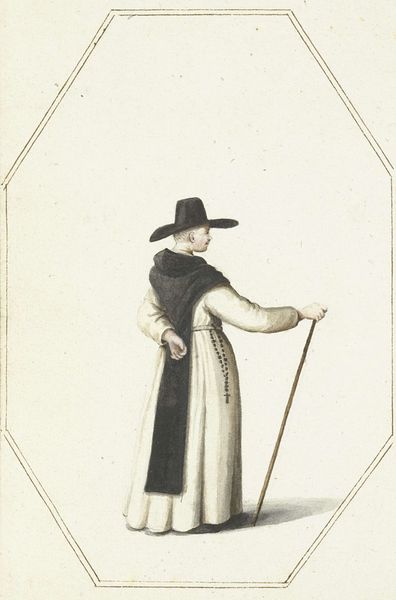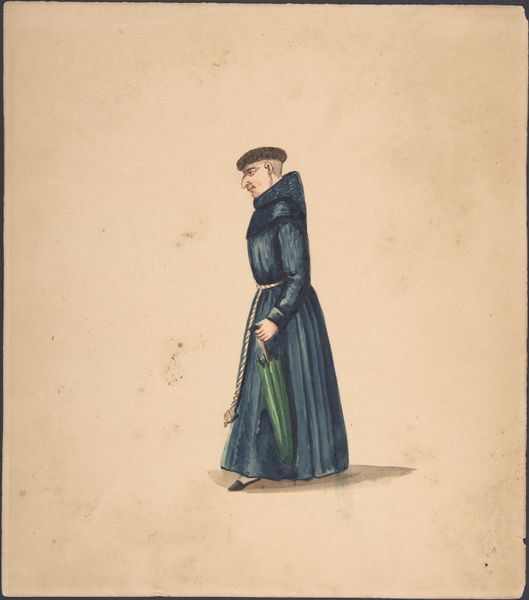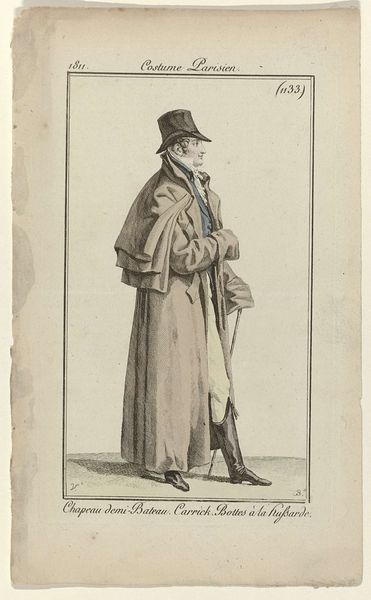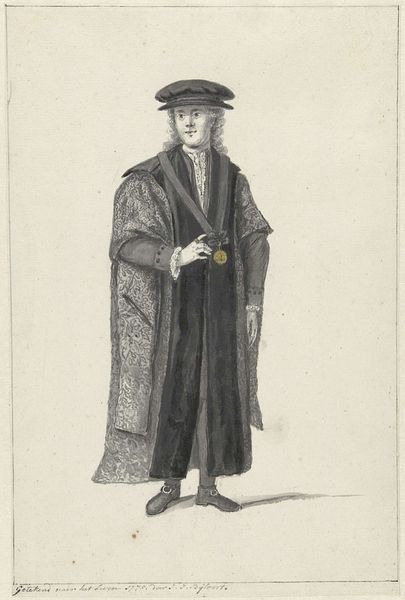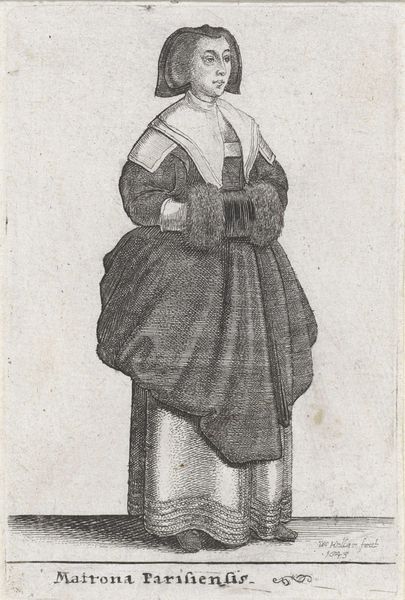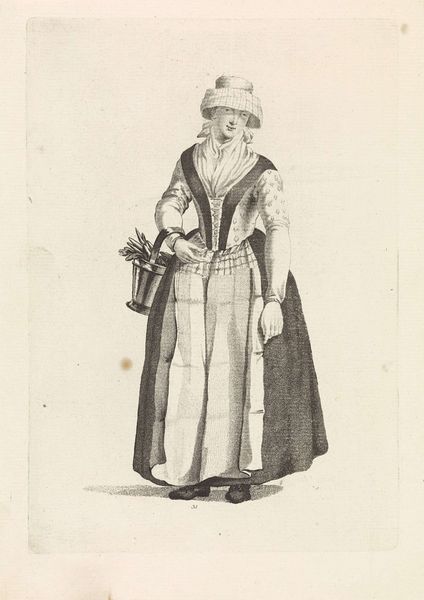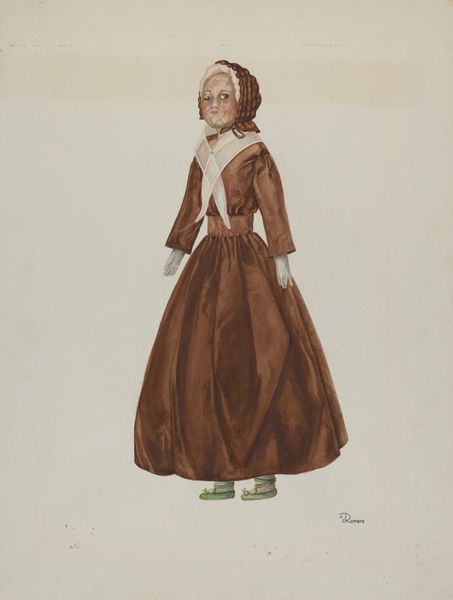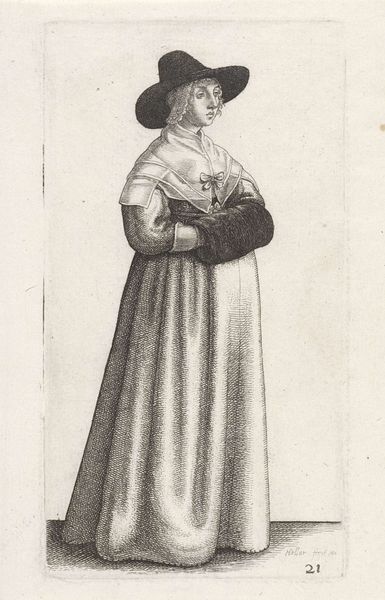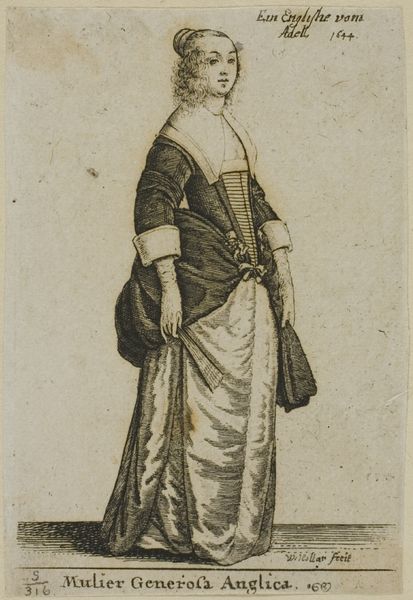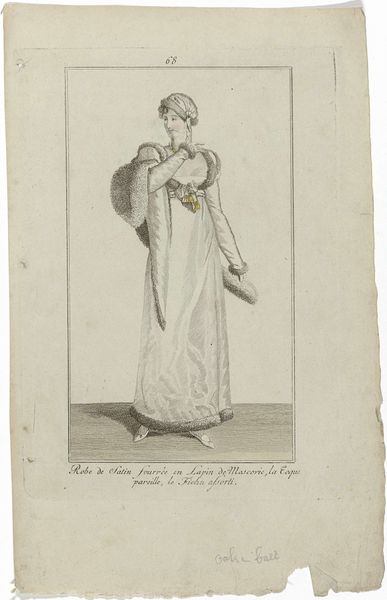
drawing, paper, ink
#
portrait
#
drawing
#
dutch-golden-age
#
pencil sketch
#
paper
#
historical fashion
#
ink
#
genre-painting
Dimensions: height 175 mm, width 130 mm
Copyright: Rijks Museum: Open Domain
Curator: This is "Standing Brother," a drawing in ink and pencil on paper, created by Gesina ter Borch in 1657. It’s currently held in the Rijksmuseum collection. Editor: My initial reaction? Simplicity, yet there’s something unsettling about the figure’s gaze. It feels direct, challenging, not at all passive despite the seemingly humble garb. Curator: Interesting. I immediately focus on Ter Borch's technique. The meticulous application of ink and pencil, building volume with delicate hatching… consider the paper she’s using. Sourcing fine paper at this time would involve specific trade routes and considerable expense, telling us about resources at her disposal and how drawing had value for her and her intended audiences. Editor: And it tells us something about the sitter, too, doesn't it? The man's religious clothing speaks volumes. I notice the prominent Maltese cross. Given the era, religious orders played powerful social and political roles. This drawing exists within those power structures and begs a reading within intersectional political structures related to faith. Curator: The choice of media—drawing—itself is also worth exploring. During the Dutch Golden Age, drawing existed in this complicated space: was it preparation for a "finished" painting, or was it the end product, art itself? We need to acknowledge and recognize this woman as maker in the artistic traditions as it became increasingly market driven. Editor: Exactly! And let’s not forget that this work was made by a woman in the 17th century. What was the social positioning of women artists at the time? Examining Ter Borch as a woman artist demands thinking through not only who made the work but also how her gender shaped her practice, her subject matter, and the reception of her work. Curator: Thinking about it materially, the controlled strokes suggest precision and careful planning. You can see her labor reflected in the minute details, the rendering of the cloth, the fall of light...The level of control in her mark making speaks of hours upon hours of committed artistry. Editor: Indeed. And I find the setting compelling. It could be anywhere or nowhere at all. Placed off center in its field and floating, "Standing Brother" seems intentionally set off balance, destabilized in the octagonal field—prompting an activist’s reading on ideas around religion and its complex relationship to political structures, gender roles and personal faith, making it resonate beyond its time. Curator: Ultimately, reflecting on process and material makes one appreciate the work as not just a portrait, but a testament to labor and resourcefulness. Editor: Yes, the artwork acts as a window onto complex social negotiations—reminding us how vital art is in framing broader social issues.
Comments
No comments
Be the first to comment and join the conversation on the ultimate creative platform.
